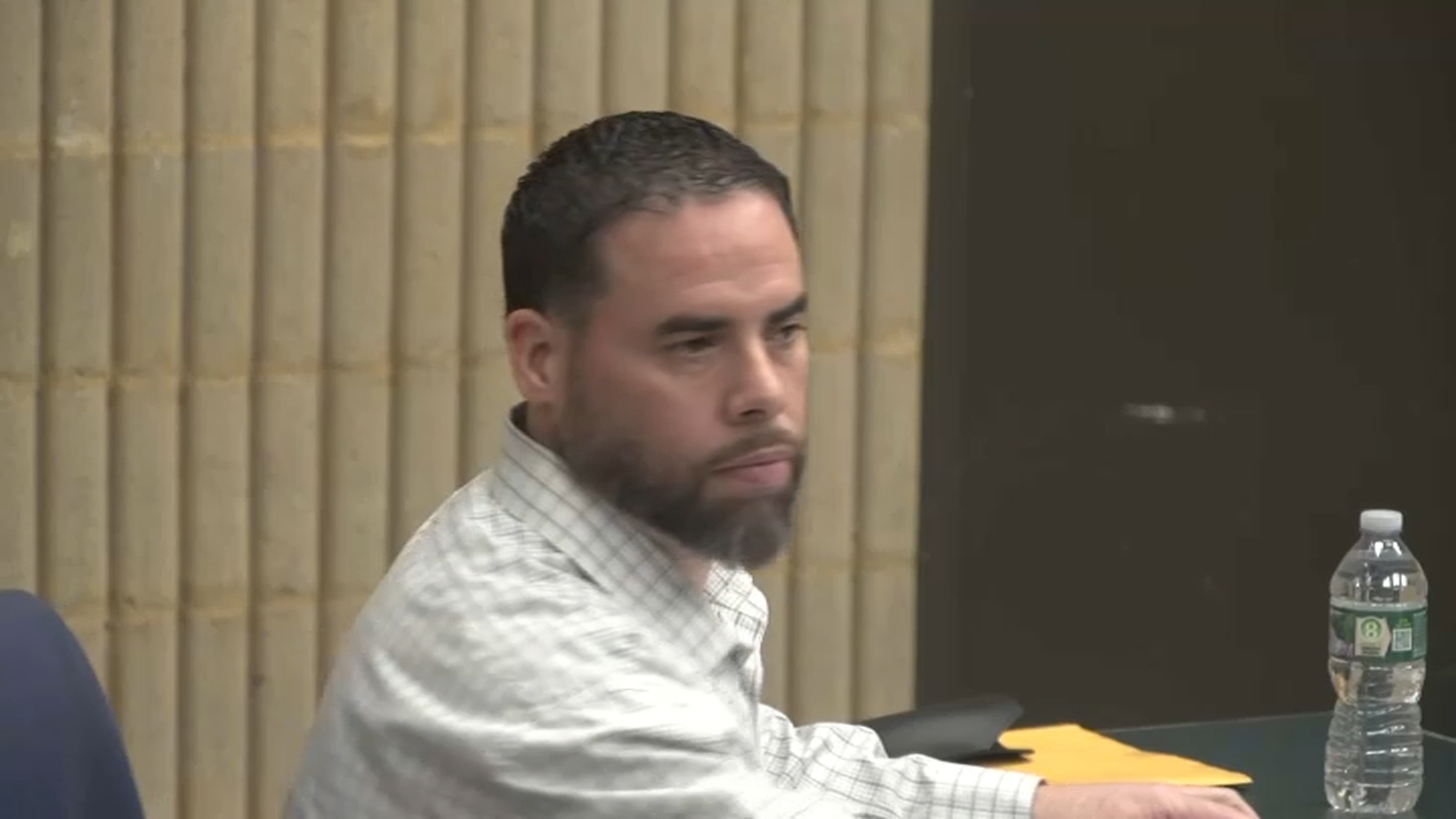The family of Kyree Dowd, the 27-year-old man who drowned at Bantam Lake earlier this month after rescuing his girlfriend’s teen son, is launching a water safety scholarship to promote access to swim lessons.
As summer brings more people out to pools, lakes, and beaches, there is an alarming trend: drowning deaths across the country are suddenly spiking after two decades of declines.
Disparities also persist among people of color, according to the new report from the Centers for Disease Control and Prevention.
An early June camping trip to Bantam Lake for one Connecticut family was meant to kick off summer and mark several celebrations: Stacy Pare’s birthday, her daughter’s graduation, and her engagement to Kyree Dowd, as he prepared to spend his first Father’s Day with Pare and her four kids the following week.
Then Dowd took a swim with Pare’s 16-year-old son, and all the celebrations came grinding to a halt.
Get top local stories in Connecticut delivered to you every morning. Sign up for NBC Connecticut's News Headlines newsletter.
“My son is Nasario, he said something was like pulling him under. We learned it was the current,” Pare said. “Before even saying Kyree’s name, Kyree jumped back in for him.”
After pushing the teen to safety, Dowd never came back up. It took rescue crews another half hour to pull him from the bottom of the lake.
“He was under a long time,” Pare said. “It's the worst day of my life.”
Local
The 27-year-old, originally from Waterbury, died in the hospital six hours later, on Saturday, June 8. He was surrounded by family, including his godmother, Tracey Dickerson.
“I got to watch him take his first breath. And take his last,” Dickerson said.
A funeral service earlier this month drew 500 people, Pare said.
“He is a hero," Pare said. “I know Kyree wouldn't do nothing different. And if he couldn't get my son, our son, because that's what he considered him, I would have lost both of them.”
The family is not the only one shattered by a future cut short as summer begins.
In the past month, from May 26 to June 26, NBC Connecticut has reported on three deadly accidental drownings, including Dowd’s.
In the other fatal cases, a 21-year-old man died in a reservoir in Oxford, and a 3-year-old girl drowned in a child’s wading pool in Bridgeport.
There were at least another five near misses in the same time frame, several involving young children and teens that were rescued.
The incidents come as a new CDC report highlights a disturbing trend: drowning deaths are on the rise nationwide after years of declines.
The report shows that in 2019, there were just over 4,000 drowning deaths across the U.S. Then the following years, 2020, 2021, and 2022, saw more than 4,500 drowning deaths each year.
“That's about 500 more drowning deaths each year,” Dr. Tessa Clemens, CDC Health Scientist in Injury Prevention and study author, said. “Prior to the year 2020, we had seen a consistent decline in drowning death rates in the U.S. So, yes, quite concerning to see these increases.”
Dr. Clemens says when it comes to drowning deaths, the data shows racial disparities seen in the past persist, with Native American and Black Americans at highest risk. A majority of Hispanic (72 percent) and Black adults (63 percent) also self-reported that they have never taken swim lessons.
Yet the group at highest risk is young children, ages one to four.
“Nobody should lose a loved one to drowning. No one should lose a child to drowning,” Dr. Clemens said. “This just really underscores the need for implementing proven drowning prevention strategies.”
The heartbreaking reality is reflected in Connecticut bodies of water. In the past decade, 70 percent of child drowning deaths in the state have happened amongst children of color, either Hispanic (30 percent) or Black (40 percent), according to the Connecticut Office of the Child Advocate.
“It's quite disproportional based on our population in Connecticut,” said Brendan Burke, Assistant Child Advocate and member of the Child Fatality Review Panel.
Burke presented data and trends on drowning in Connecticut to the Child Fatality Review Panel Wednesday. The group analyzes child deaths, and advocates for safety measures and legislation that could protect kids.
The good news is that Connecticut ranks third lowest for drowning deaths in the nation, only behind New Jersey and New York.
“A lot of that has to deal with climate. A lot of that has to do with resources,” Burke said.
From 2014 to 2023, there were 41 drowning deaths in the state; 36 of those were accidental and 5 were homicides. Of those 41 deaths, 32 were Connecticut residents. The data does not account for Connecticut residents who drowned in other states.
Burke says there are two age groups that saw drowning death spikes in that frame: young children ages 2 to 4, and teens ages 16 to 17. Boys were 75-percent more likely to drown than girls.
“Young children die from closed swimming environments, so your pools, your hot tubs, your bathtubs,” Burke said. “Older kids die from drowning in open environments, lakes, rivers, anywhere they're swimming freely.”
As for racial and ethnic breakdowns, of the 41 child drowning victims in the past decade, 14 were Black, 13 were Hispanic, 12 were white, and 2 were Asian.
“It’s access,” Burke said about the cause of the disparities. “It's access to services, access to supports.”
However, access was disrupted by COVID-19, the CDC now tying the pandemic into the uptick in drownings.
Contributing factors were that public pools closed, so there were limited supervised swimming areas, and lifeguard trainings stopped, leading to shortages even when pools reopened, according Dr. Clemens.
Swimming lessons also halted, so for an extended period of time kids were not learning how to swim.
Kids like 5-year-old Avery.
“In the pandemic, you know, classes weren't available,” said Avery's mother, Larisa Kottke, of West Hartford. “Her swim experience was scattered.”
Now swim lessons at the YMCA of Greater Harford are Avery’s favorite Saturday activity.
“It also gives me more confidence as a mom,” Kottke said. “Kids need to know what to do when they're in water.”
That is the YMCA's mission: to turn around the drowning statistics. This month, the downtown Hartford location opened up its pool.
“We offered 100 free swim lessons to residents of the city of Hartford, for children of color who had never learned how to take swim lessons before," Harold Sparrow, YMCA of Greater Hartford President & CEO, said. “It filled up within 72 hours.
Due to that huge demand, the YMCA is now offering 200 more free water safety lessons in July and August. They are not just for kids, but also for parents who never learned to swim.
“It's about access to water, it's about opportunities,” Sparrow said. “I think if you come from the middle class, upper middle class, then you get a chance to go to summer camps and beach vacations and things of that nature, where you would learn how to swim.”
“Often children from low socioeconomic backgrounds just don't have those opportunities and/or access, hence they don't learn how to swim. And then that's when accidents happen,” he said.
They are opportunities that Dowd’s family wants to ensure are widely available.
While Pare says both Dowd and her son were strong swimmers, when it comes to water safety, she believes there is always more to learn.
It’s why the family is now launching a new water safety scholarship, spearheaded by Dowd’s mother to honor her late son. It's one step, to try to keep another family from enduring the unthinkable.
“How Kyree went, he went out as a hero. He did, and he wouldn't change it for nothing," Pare said. "But my life is destroyed. His family’s life is destroyed."
Those who want to register for swimming and water safety classes at the YMCA of Greater Hartford can do so online at GHYMCA.org.
Affordable lessons are also available through the American Red Cross, the United States Swim School Association and USA Swimming.
The U.S. National Water Safety Action plan helps states and communities identify preventative drowning measures. Those include recommendations for improving basic swimming and water safety skills trainings.
The Office of the Child Advocate says there are several steps caregivers and others can take to protect children from drowning. Those include:
- Put barriers around water (a fence around a pool is safer than a fence around a yard)
- Empty tubs and buckets
- Supervision
- Use a U.S. Coast Guard approved life jacket
- Learn emergency skills, like CPR
- Take formal swimming lessons
The Office of the Child Advocate supported a bill this year that would have required fences or barriers be put around all pools; House Bill 5169 failed in the legislature.



